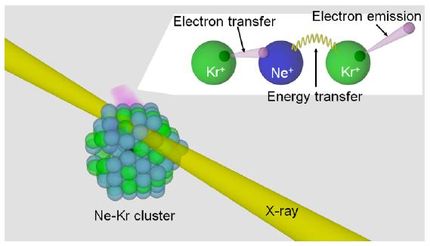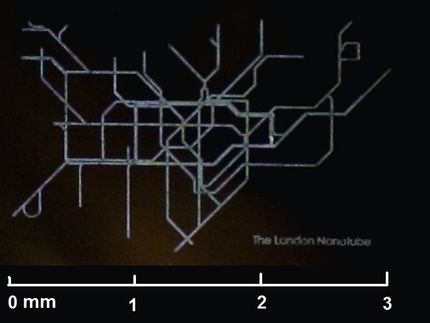Study gives clues to increasing X-rays' power
3-D, real-time X-ray images may be closer to reality
Three-dimensional, real-time X-ray images of patients could be closer to reality because of research recently completed by scientists at the University of Nebraska-Lincoln and a pair of Russian institutes.
In a paper to be published in an upcoming edition of Physical Review Letters, UNL Physics and Astronomy Professor Anthony Starace and his colleagues give scientists important clues into how to unleash coherent, high-powered X-rays.
"This could be a contributor to a number of innovations," Starace said.
Starace's work focuses on a process called high-harmonic generation, or HHG. X-ray radiation can be created by focusing an optical laser into atoms of gaseous elements – usually low-electron types such as hydrogen, helium, or neon. HHG is the process that creates the energetic X-rays when the laser light interacts with those atoms' electrons, causing the electrons to vibrate rapidly and emit X-rays.
But the problem with HHG has been around almost as long as the onset of the method in 1988: The X-ray light produced by the atoms is very weak. In an effort to make the X-rays more powerful, scientists have attempted using higher-powered lasers on the electrons, but success has been limited.
"Using longer wavelength lasers is another way to increase the energy output of the atoms," Starace said. "The problem is, the intensity of the radiation (the atoms) produce drops very quickly."
Instead of focusing on low-electron atoms like hydrogen and helium, Starace's group applied HHG theory to heavier (and more rare) gaseous atoms having many electrons – elements such as xenon, argon and krypton. They discovered that the process would unleash high-energy X-rays with relatively high intensity by using longer wavelength lasers (with wavelengths within certain atom-specific ranges) that happen to drive collective electron oscillations of the many-electron atoms.
"If you use these rare gases and shine a laser in on them, they'll emit X-Rays with an intensity that is much, much stronger (than with the simple atoms)," Starace said. "The atomic structure matters."
Starace said that unlocking the high-powered X-rays could lead one day, for example, to more powerful and precise X-ray machines. For instance, he said, heart doctors might conduct an exam by scanning a patient and creating a 3D hologram of his or her heart, beating in real time.
Nanoscientists, who study the control of matter on an atomic or molecular scale, also may benefit from this finding, Starace said. Someday, the high-intensity X-rays may be used to make 3D images of the microscopic structures with which nanoscientists work.
"With nanotechnology, miniaturization is the order of the day," he said. "But nanoscientists obviously could make use of a method to make the structures they're building and working with more easily visible."
Most read news

Get the analytics and lab tech industry in your inbox
By submitting this form you agree that LUMITOS AG will send you the newsletter(s) selected above by email. Your data will not be passed on to third parties. Your data will be stored and processed in accordance with our data protection regulations. LUMITOS may contact you by email for the purpose of advertising or market and opinion surveys. You can revoke your consent at any time without giving reasons to LUMITOS AG, Ernst-Augustin-Str. 2, 12489 Berlin, Germany or by e-mail at revoke@lumitos.com with effect for the future. In addition, each email contains a link to unsubscribe from the corresponding newsletter.
More news from our other portals
Last viewed contents
Survey Finds Ways for Oligo Suppliers to Differentiate Themselves
Eurofins acquires of Boston Heart Diagnostics Corporation
Biotage receives largest committed order in history

























































